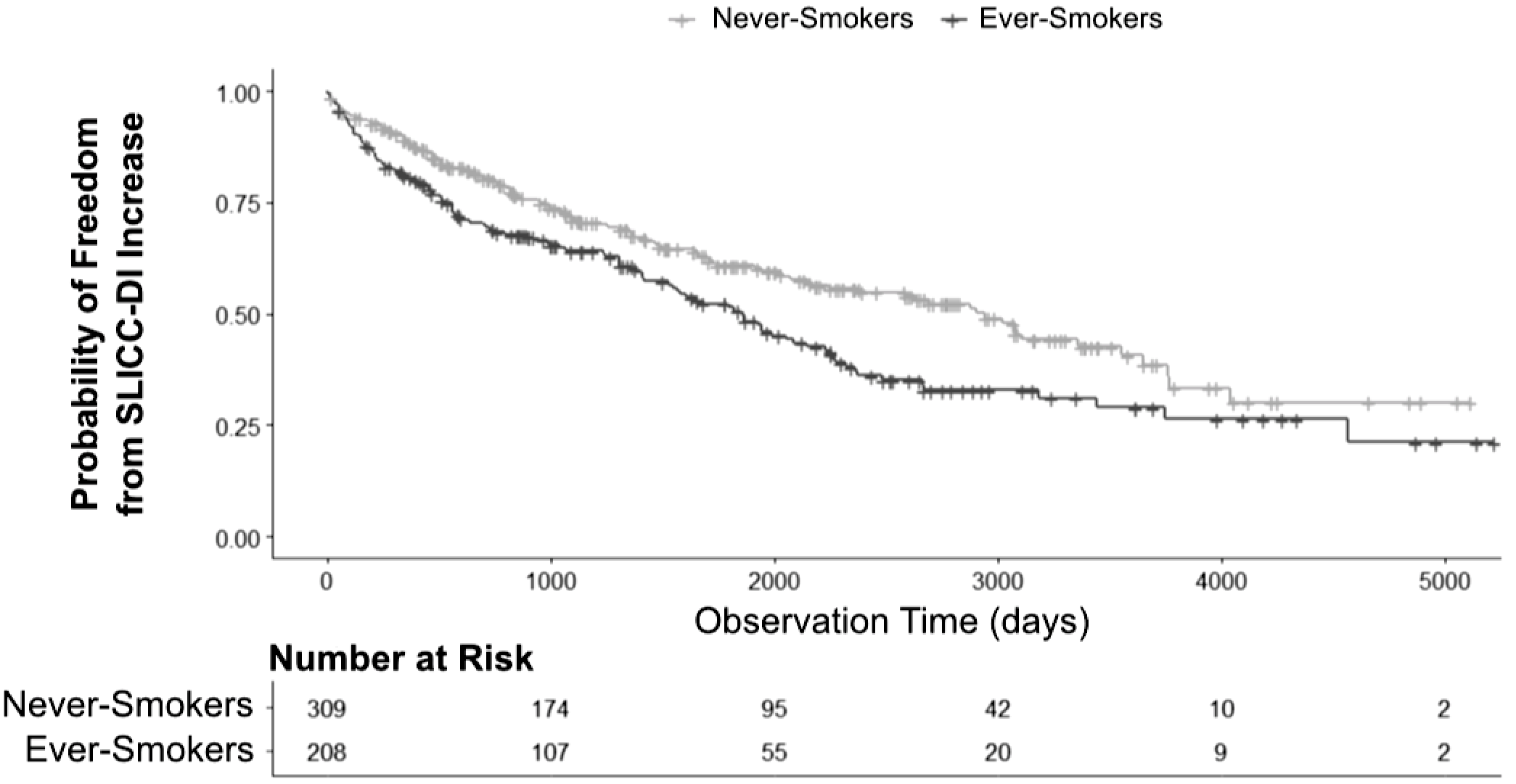Session Information
Date: Tuesday, October 23, 2018
Title: Epidemiology and Public Health Poster III: SLE, SSc, APS, PsA, and Other Rheumatic Diseases
Session Type: ACR Poster Session C
Session Time: 9:00AM-11:00AM
Background/Purpose: Tobacco smoking predisposes to certain specific manifestations of systemic lupus erythematosus (SLE); however, less is known about smoking and cumulative organ damage in SLE. Our study aimed to examine the relationship of smoking history and pack-year exposure on rates of end-organ damage in a cohort of SLE patients.
Methods: Observational study in a cohort of 631 consecutive SLE patients at a single academic institution. Patients with at least one ambulatory rheumatology encounter and an ICD-9 or -10 code for SLE between 2008 and 2016 were identified. Electronic health records (EHR) were manually abstracted and patients meeting either ACR 1987 or SLICC 2012 classification criteria for SLE were included in analysis. The primary outcomes examined were median time to SLICC damage index (SLICC-DI) increase or death during the study period. The primary explanatory variable was ever smoking, defined as current or former smoking as ascertained from the EHR. Covariates examined included age at diagnosis, sex, race, ethnicity, area deprivation index (a marker of neighborhood poverty), number of SLE criteria, and SLICC-DI at time of study entry. Kaplan-Meier survival analysis was used to compare time to DI increase between ever-smokers and never-smokers. Multivariate analysis was performed using a Cox proportional hazards model.
Results: Compared to never-smokers, ever-smokers in the cohort were older at SLE diagnosis and at time of entry into the study (44.7 years vs 44.5, p<0.01; 55.9 years vs. 51.9, p<0.01). There were no significant differences in sex (88% female in ever-smokers vs 92% in never-smokers, p=0.41), race (83% white vs 82%, p=0.25) or Hispanic ethnicity (5% vs 3%, p= 0.92). Among 517 patients with SLICC-DI of 0 at the start of observation, the median time to increase in SLICC-DI was 61.7 months in ever-smokers (95% CI, 50.8 – 75.1) and 97.9 months in never-smokers (95% CI, 74.6 – 121.6), as shown in Figure 1. Age at SLE diagnosis (HR 1.03 per year, 95% CI 1.02 – 1.04) and greater than 10 pack-year smoking history (HR 1.43 compared to never-smokers, 95% CI 1.02 – 2.01) were significant predictors of earlier SLICC-DI increase in an adjusted Cox model.
Conclusion: Current or past smoking predicted earlier progression of cumulative organ damage in this cohort of SLE patients, with ever-smokers first developing organ damage about 3 years earlier than never-smokers. Further work is needed to replicate findings in more diverse cohorts, and to examine the effects of tobacco cessation on damage accrual.
Figure 1: Kaplan-Meier survival curve showing probability of freedom from SLICC-DI increase by smoking exposure in patients with no previously accrued damage (SLICC-DI = 0) at time of study entry.
To cite this abstract in AMA style:
McKown T, Unnithan R, Ezeh N, Ye T, Bartels CM. Smoking Status Predicts Earlier SLICC Damage Index Progression in a Large SLE Cohort [abstract]. Arthritis Rheumatol. 2018; 70 (suppl 9). https://acrabstracts.org/abstract/smoking-status-predicts-earlier-slicc-damage-index-progression-in-a-large-sle-cohort/. Accessed .« Back to 2018 ACR/ARHP Annual Meeting
ACR Meeting Abstracts - https://acrabstracts.org/abstract/smoking-status-predicts-earlier-slicc-damage-index-progression-in-a-large-sle-cohort/

